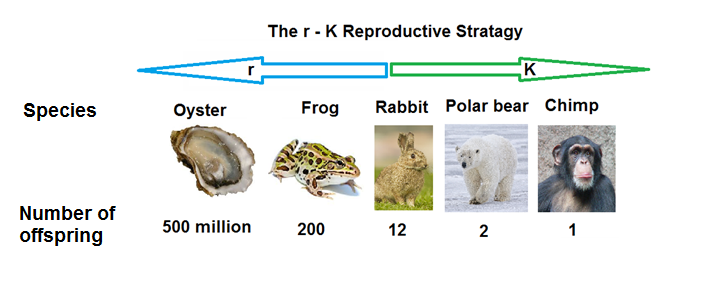 The Easter holidays are nearly upon us again, shops stacked floor to ceiling with an incredible array of colourful chocolate eggs… which got me thinking, why so many eggs?
The Easter holidays are nearly upon us again, shops stacked floor to ceiling with an incredible array of colourful chocolate eggs… which got me thinking, why so many eggs?
The ocean sunfish (which all my thoughts eventually turn to) is well known for being the most fecund vertebrate on earth with a single female estimated to contain 300 million eggs!
But why so many? Eggs are energetically expensive to produce and tiny offspring are vulnerable to predators, so from the outskirts this seems like a strange and risky reproductive strategy.
The number and size of offspring an animal produces is often classed into two categories:
1) K Stratagists 2) r Stratagists
The animals grouped as K stratagists chose quality over quantity. They have very few young, but these tend to be larger in size, more developed at birth and enjoy a higher degree of parental care so that although fewer offspring are born, they are more likely to survive to adulthood.
At the other end of the scale are the ‘r stratagists’; animals in this category play the numbers game! They can produce millions of tiny offspring, often with no parental care at all so although the chances of survival are low for the individual, the sheer number of young produced means that one or two surive against all odds.

Of course we cannot really divide the entire animal kingdom into two arbitary classes, but this provides a useful scale to consider different stratagies for species. The ocean sunfish of course, subscribes to the r strategy with millions of eggs released into the water. We often think of this fish as an oceanic giant with few predators, but of course sunfish start as eggs drifting in the plankton only 1mm in size which puts them right at the bottom of the food chain! The eggs will float around, and if they remain in the right conditions, hatch into tiny fish fry. These fry will need to avoid predators and find enough food to survive, their best defense is to grow larger with increased muscle mass to outswim predators and become too big for predators to pick on. Of course this will only be achievable for tiny proportion of each cohort, but strange as it may seem, this is a successful stratagy that has maintained the population of ocean sunfish for millions of years.
So on Easter weekend, when you are stuffed to bursting with eggs of all shapes and sizes (as I intend to be!), spare a thought for the poor sunfish, for them this is simply business as usual.
